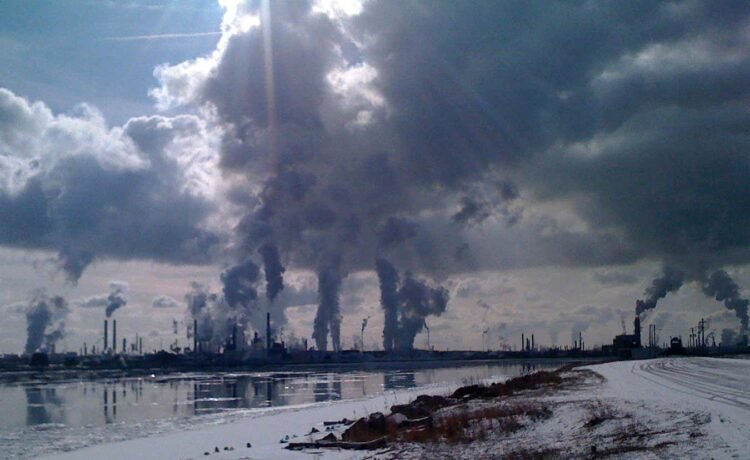Plumes of pollution from big factories can make it snow


Factory aerosols can transform the clouds above
Getty Images/iStockphoto
Plumes of pollution from large factories can trigger snowfall and leave holes in clouds that stretch over large areas, satellite images have revealed.
It has long been known that tiny particles of pollutants like soot, known as aerosol pollution, can affect clouds in many ways. Water vapour can condense on pollutant particles, triggering cloud formation, and pollutants can also alter the properties of existing clouds.
While studying these effects, Velle Toll at the University of Tartu in Estonia noticed that there were sometimes holes in clouds downwind of major pollution sources. He and his colleagues have now analysed thousands of satellite images of North America and Eurasia and found 67 places where this effect can be seen, during the correct atmospheric conditions.
Weather radar confirmed that these events were causing snowfall. In the biggest instance the team found, up to 15 millimetres of snow fell over a 2200-square-kilometre (850-square-mile) area.
This happens because pollutant particles cause supercooled water droplets in clouds to freeze around them, producing ice crystals that grow into snowflakes, says Toll. “And if we have water coming out of the cloud as snow, then we end up with less clouds.”
In the absence of any particles, water droplets in clouds can stay liquid even when the air is as cold as -40°C (-40°F).

This satellite image shows reduced cloud cover downwind of a copper smelter in Canada
Velle Toll
The 67 pollution sources the team found are mostly oil refineries and factories producing metals, cement or fertilisers. But surprisingly, the researchers occasionally saw a similar effect near four nuclear power stations that don’t produce any aerosol emissions.
This might be because the warm air rising from these power stations is lifting up aerosol pollution from elsewhere, but the team hasn’t confirmed this. “We don’t have a definite explanation for that,” says Toll.
In theory, the aerosol effect could be used to deliberately trigger snowfall, but it would only work where clouds of supercooled liquid water droplets are already present, says Toll.
Topics:
You Might Also Like
Surgical robots take step towards fully autonomous operations
A surgical robot operating on a dead pigJuo-Tung Chen/Johns Hopkins University An AI-powered robot was able to remove a gall...
Fig trees may benefit climate by turning carbon dioxide into stone
Fig trees may be especially good at removing carbon dioxide from the atmosphereRaimund Linke/mauritius images GmbH/Alamy Some fig trees can...
3D printing could enable a safer long-term therapy for type 1 diabetes
People with type 1 diabetes can’t produce enough insulin to regulate their blood sugarHalfpoint Images/Getty Images Researchers have 3D printed...
Polycystic ovary syndrome may be passed on via chemical tags on DNA
Illustration of enlarged ovaries in someone with polycstic ovary syndromeScience Photo Library/Alamy Polycystic ovary syndrome may be passed down through...









